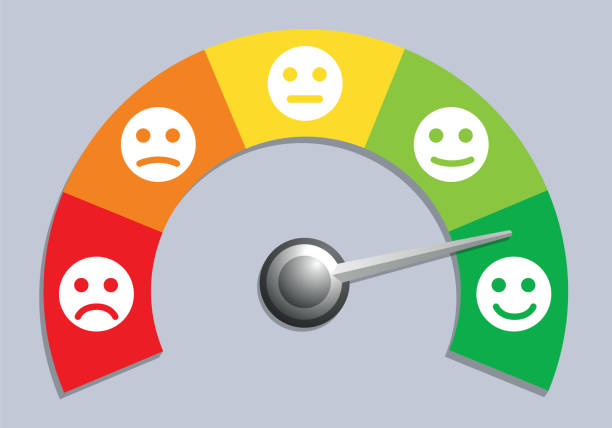Every employee will find themselves in a performance review at some point in their career. They can sound a little daunting but they’re a normal and necessary part of professional development.
The overall aim of a performance review is for a manager to assess and discuss your contributions, offer valuable feedback, and help develop your path through the company. It’s common for anyone, from a new starter to a seasoned professional to be invited for a performance review.
In this article, we’ll be taking a deeper look at what you should expect in a performance review. We’ll discuss the different types you may encounter and how to best prepare for this discussion.
What are employee performance reviews?
Employee performance reviews or performance appraisals are formal assessments between a manager and an employee to discuss job performance.
Evaluations are typically a structured conversation covering topics like:
- Past performance
- Feedback on progress
- Goals for the future
- Identifying strengths and weaknesses
- Project completion
- Customer satisfaction levels
- Adherence to key performance indicators (KPIs)
Performance reviews are about a lot more than just pointing out areas for improvement — they’re a platform for discussing and recognising achievements, addressing challenges, and creating a better dialogue between employees and managers.
It serves as a form of continuous feedback which is incredibly important for growing your career. Performance reviews are a better way of career development than relying solely on annual or quarterly reviews which don’t allow for the same opportunity to discuss your work conduct.
Regular check-ins allow managers to provide timely feedback and give employees the chance to make real-time adjustments to their performance. You’ll be able to get ahead of any issues and avoid burnout by getting more structured support.
They can be particularly useful for graduates entering the workforce. Performance reviews can lay strong foundations for early career development. Managers can check in to help new workers adjust to their roles and build the skills necessary for long-term success.
Similarly, more experienced professionals benefit from reviews by identifying areas for growth and pursuing opportunities for promotion.
Types of performance reviews explained
Performance reviews are available in all shapes and sizes which may affect the frequency or format. They are typically designed to fit both the organisation and the employee’s role for maximum benefit.
Here are some of the most common types:
Weekly or biweekly reviews
These short check-ins are ideal for tracking progress on specific projects or tasks. They are particularly useful for employees in fast-paced environments where early-stage feedback is essential for development.
Graduate programmes, internships, or new hires may be offered more frequent performance reviews to track development early. Managers can ensure new employees are receiving the right kind of support so their team members can adapt to their roles constructively and efficiently.
Monthly reviews
Monthly reviews provide a more detailed look at an employee’s progress, offering a chance to address any immediate challenges or successes. Employees and managers may discuss key areas for improvement and check in on progress at the next review.
Quarterly reviews
Quarterly performance reviews are common in many organisations. They provide a structured format to assess an employee’s performance against set goals over a three-month period.
Annual performance reviews
Often considered the traditional approach, annual reviews provide a comprehensive evaluation of an employee’s performance over the past year. These reviews often involve a more formal process, including written feedback and the setting of long-term goals.
How to approach a performance review
Conducting or participating in a performance review requires preparation and a mindset focused on growth and improvement. Whether you’re a manager or an employee, approaching a review with a clear plan helps to cultivate a productive and constructive conversation.
Here are some best practices to consider:
- Prepare in advance: Managers will gather relevant data about the employee’s performance, including specific achievements, areas for improvement, and feedback from colleagues if available. Employees should also reflect on their own performance and be prepared to discuss their progress and goals.
- Focus on employee support and organisational growth: Performance reviews should be more than a report card. They are an opportunity to support employees in their personal and professional development. Your manager should help you to identify areas where you can grow while aligning your goals with the organisation’s objectives.
- Encourage two-way dialogue: Reviews should feel like an open environment where employees can be comfortable discussing their challenges, ask questions, and provide their own feedback to management. This creates an atmosphere of trust and improves the effectiveness of the review process.
- Move beyond traditional methods: While annual reviews are still common, integrating continuous feedback through more regular check-ins can create a more agile performance management system.
Reviews also present a good opportunity for managers and their employees to connect. Creating a safe space, without judgment, helps to develop an employee’s loyalty to both their manager and the business at large.
Example questions for performance reviews:
- What are your proudest accomplishments over the past period?
- What challenges have you encountered, and how did you overcome them?
- In what areas do you feel you could improve, and how can we support you in this?
- What are your goals for the next quarter/year?
How to create effective performance review templates
A well-thought-out performance review template can standardise the process, ensuring that all necessary areas are covered.
Here’s a step-by-step guide for creating one:
- Include basic information: Start with the basics — employee name, job title, department, manager, and review period.
- Set a clear rating system: Whether you use a numerical scale (e.g., 1-5) or descriptive categories (e.g., Exceeds Expectations, Meets Expectations, Needs Improvement), develop a system that’s well-defined so that both the reviewer and employee understand the metrics used to evaluate performance.
- List evaluation items: Include key responsibilities, job-specific skills, and behavioural competencies (e.g., communication, teamwork) that are relevant to the employee’s role. This should include both self-assessment and manager feedback.
- Establish SMART goals: Use the review as an opportunity to set SMART (Specific, Measurable, Achievable, Relevant, Time-bound) goals for the next period. These goals should challenge the employee while aligning with the organisation’s objectives.
- Add open text for feedback: Provide space for both the reviewer and the employee to leave additional comments, allowing for a more personalised and comprehensive review.
Performance reviews are an excellent way to re-engage an employee who may be struggling at work. Managers will be able to discuss issues in a controlled environment with a clear purpose. This can help bring an employee’s focus and motivation back to the organisation’s overall goals.
Common challenges with performance reviews
Performance reviews are not without their challenges.
Here are some of the most common obstacles managers and HR professionals face:
- Biases: Personal biases can distort a performance review, leading to unfair assessments. To minimise bias, base reviews on measurable data and documented achievements rather than subjective opinions.
- Lack of preparation: Without adequate preparation, performance reviews can feel rushed or incomplete. Managers should dedicate time to thoroughly review employee performance, and employees should come prepared with questions and self-assessments.
- Difficulty delivering constructive feedback: Providing constructive criticism can be challenging, especially if it involves addressing performance gaps. However, approaching feedback with empathy and framing it as an opportunity for growth can make the conversation more productive.
One way to turn a good workplace into a great one is by framing feedback and positive feedforward. This is the idea of framing criticism as what can be improved in the future rather than what went wrong in the past.
Start transforming your feedback process today
Performance reviews are a vital part of career growth. They benefit everyone involved including the employee, their manager, and the overall business. With a strong focus on continuous improvement, aligning goals, and creating clear communication channels, employees can tap into their full potential and drive growth in the business.
With Recruit Ireland, you can find plenty of support and resources for career development in the advice centre. Inside you’ll find interviews with experts from a range of disciplines, and hands-on advice for people in work who may have changed careers or joined a graduate programme.
Start building a strong performance culture today by checking out Recruit Ireland’s blog and staying on top of the latest trends in employee performance.










